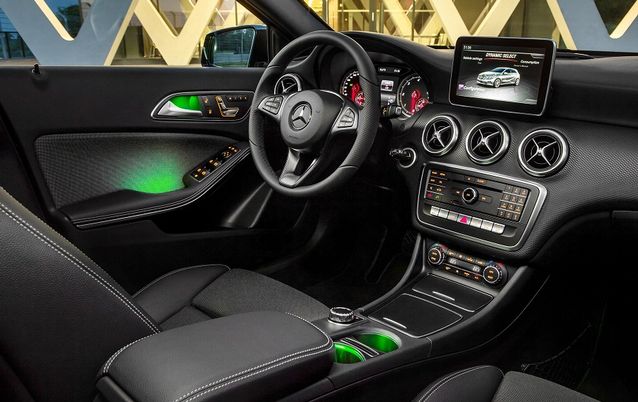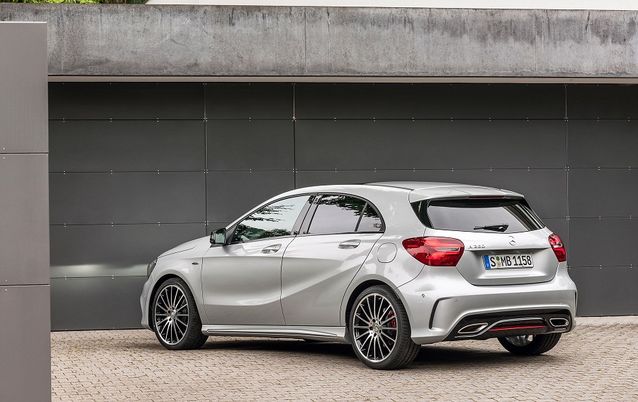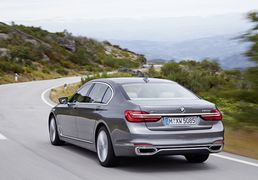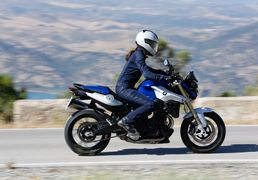NEW MODELS: Introducing the Mercedes A-plus
by Motor News Reporter,
2016-02-11 10:50:33.0
MERCEDES took a radical new direction in 2012 when it moved from the first generation of the A-Class. It dropped that little mom’s taxi image and instead decided to challenge the family hatchback kings of the Audi A3, BMW 1 Series and Volkswagen Golf. It was a brave move, but one that made sense in terms of strategy.
It did not pay off for everyone though. While the shape was undeniably attractive, many criticised the sporty suspension and cramped rear passenger space. Some of the plastics used were found wanting by some.
In spite of those criticisms, the A-Class has been a sales success and now the company is hoping to improve on that with a bunch of changes in the new generation version. It says the new-generation A-Class reconciles the conflicting aims of sporty performance and enhanced comfort. By including Dynamic Select, the driver is able to change the characteristics in a matter of seconds between comfortable, sporty or efficient.
"With the Dynamic Select driving programme selector, the new chassis with adaptive damping and LED high-performance headlamps, the new generation of the A-Class demonstrates just how high the level of innovation can be in this segment," says Florian Seidler, co-CEO Mercedes-Benz SA. "2012 was a year of paradigm change in the compact class. The new A-Class was a radical departure from the preceding series. As the most progressive model in the compact class, the model series has made a significant contribution to make the Mercedes-Benz brand more youthful. With this model update we are meeting the wishes of many customers for even more comfort with no loss of dynamic performance."
There are two diesel and three petrol variants. For diesel fans there are the A200d and A220d, while petrol models include the A200, A250 Sport and the range-topping Mercedes-AMG 45 4Matic. There is also a special Motorsport Edition which is inspired by the Mercedes AMG Petronas Formula One team.
In terms of design, the form of the new, more arrow-shaped front bumper takes its lead from the 2011 concept A-Class. With a diamond grille, new LED high-performance headlamps (optional) and newly designed tail lamps with dual tailpipe trim integrated flush into the bumper, the new generation aims to emphasise sportiness and dynamic driving.
An instrument cluster of tubular design with classy dial graphics and anodised switches upgrades the interior, as does the large, free-standing and frameless display of the infotainment system, which is optionally available with a larger 20.3cm screen. There are new colours and materials, as well as new finishes for dashboard trim. New features include beige/black leather in the Exclusive package and a new seat design with red or green highlights in the Style line.
The interior also benefits from an ambient lighting system which can be individualised with 12 colours and five dimming levels. Also new is the fully adjustable seat cushion, a standard feature in all equipment lines.
When it comes to performance and economy, the A220d has a slightly higher output of 130kW, while the A250 Sport now develops 155kW.
The Mercedes-AMG A 45 4Matic also benefits from the model update. With a maximum output of 280kW and a peak torque of 475Nm, the entry-level model from Mercedes-AMG is claimed to be the world’s most powerful compact sports model. With its 0-100km/h in 4.2 seconds, it is 0.4 seconds quicker than its predecessor.
Safety is also a strong focus, with systems such as Attention Assist, Distronic Plus distance control and Collision Prevention Assist Plus.
The assistance systems, which fuse data from sensor technologies as part of the "Intelligent Drive" concept, were further advanced in part. For example, the standard Collision Prevention Assist Plus extends the functions of the previous system with autonomous partial braking to reduce the risk of rear-end collisions.
The drowsiness detection system, Attention Assist, has been similarly upgraded: operating within an extended speed range (60-200km/h), it uses a five-stage bar display to visualise the driver’s current attention level.
The changes bolster the looks and appeal of the new model. The question will be whether the changes under the skin will appease those who criticised the initial strategy.
-

The new A-Class benefits from some styling changes. Picture: QUICKPIC
-

The interior has been upgraded including a range of ambient lighting choices. Picture: QUICKPIC
-

The AMG version is now quicker in the sprint to 100km/h. Picture: QUICKPIC
-

Sport versions add a little more visual venom. Picture: QUICKPIC
MERCEDES took a radical new direction in 2012 when it moved from the first generation of the A-Class. It dropped that little mom’s taxi image and instead decided to challenge the family hatchback kings of the Audi A3, BMW 1 Series and Volkswagen Golf. It was a brave move, but one that made sense in terms of strategy.
It did not pay off for everyone though. While the shape was undeniably attractive, many criticised the sporty suspension and cramped rear passenger space. Some of the plastics used were found wanting by some.
In spite of those criticisms, the A-Class has been a sales success and now the company is hoping to improve on that with a bunch of changes in the new generation version. It says the new-generation A-Class reconciles the conflicting aims of sporty performance and enhanced comfort. By including Dynamic Select, the driver is able to change the characteristics in a matter of seconds between comfortable, sporty or efficient.
"With the Dynamic Select driving programme selector, the new chassis with adaptive damping and LED high-performance headlamps, the new generation of the A-Class demonstrates just how high the level of innovation can be in this segment," says Florian Seidler, co-CEO Mercedes-Benz SA. "2012 was a year of paradigm change in the compact class. The new A-Class was a radical departure from the preceding series. As the most progressive model in the compact class, the model series has made a significant contribution to make the Mercedes-Benz brand more youthful. With this model update we are meeting the wishes of many customers for even more comfort with no loss of dynamic performance."
There are two diesel and three petrol variants. For diesel fans there are the A200d and A220d, while petrol models include the A200, A250 Sport and the range-topping Mercedes-AMG 45 4Matic. There is also a special Motorsport Edition which is inspired by the Mercedes AMG Petronas Formula One team.
In terms of design, the form of the new, more arrow-shaped front bumper takes its lead from the 2011 concept A-Class. With a diamond grille, new LED high-performance headlamps (optional) and newly designed tail lamps with dual tailpipe trim integrated flush into the bumper, the new generation aims to emphasise sportiness and dynamic driving.
An instrument cluster of tubular design with classy dial graphics and anodised switches upgrades the interior, as does the large, free-standing and frameless display of the infotainment system, which is optionally available with a larger 20.3cm screen. There are new colours and materials, as well as new finishes for dashboard trim. New features include beige/black leather in the Exclusive package and a new seat design with red or green highlights in the Style line.
The interior also benefits from an ambient lighting system which can be individualised with 12 colours and five dimming levels. Also new is the fully adjustable seat cushion, a standard feature in all equipment lines.
When it comes to performance and economy, the A220d has a slightly higher output of 130kW, while the A250 Sport now develops 155kW.
The Mercedes-AMG A 45 4Matic also benefits from the model update. With a maximum output of 280kW and a peak torque of 475Nm, the entry-level model from Mercedes-AMG is claimed to be the world’s most powerful compact sports model. With its 0-100km/h in 4.2 seconds, it is 0.4 seconds quicker than its predecessor.
Safety is also a strong focus, with systems such as Attention Assist, Distronic Plus distance control and Collision Prevention Assist Plus.
The assistance systems, which fuse data from sensor technologies as part of the "Intelligent Drive" concept, were further advanced in part. For example, the standard Collision Prevention Assist Plus extends the functions of the previous system with autonomous partial braking to reduce the risk of rear-end collisions.
The drowsiness detection system, Attention Assist, has been similarly upgraded: operating within an extended speed range (60-200km/h), it uses a five-stage bar display to visualise the driver’s current attention level.
The changes bolster the looks and appeal of the new model. The question will be whether the changes under the skin will appease those who criticised the initial strategy.

























Change: 1.11%
Change: 1.18%
Change: 1.15%
Change: 0.95%
Change: 1.97%
Data supplied by Profile Data
Change: -2.39%
Change: -1.60%
Change: 1.11%
Change: 0.00%
Change: -1.23%
Data supplied by Profile Data
Change: 0.09%
Change: -0.20%
Change: -0.65%
Change: -0.14%
Change: -0.67%
Data supplied by Profile Data
Change: -0.55%
Change: -1.04%
Change: -0.76%
Change: -0.38%
Change: 2.01%
Data supplied by Profile Data